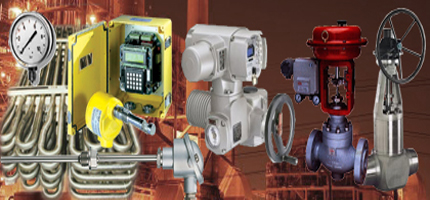 |
||||||||
|
||||||||
|
Abstract: This thesis is to analyze and solve India BALCO project’s LP heater drain pump cavitation problem, and further provide experiences for the design of equipment of the same type.
Key words: LP heater drain pump, cavitation, NPSH (net positive suction head)
1. Introduction
In general, LP heater drain pump’s running condition was/is poor. During normal operation, its inlet pressure is a little low (sometimes even negative), while the outlet pressure is relatively high (generally higher than the pressure of condensate water). Therefore, cavitation will occur easily when designed improperly. There are four LP heaters in India BALCO 4x135MW project, which adopts cascaded drains and emergency drain. # 6 LP heater drains to #6 LP’s exit through LP heater drain pump in the normal way (the normal drain of #6 LP heater is pumped to its outlet by LP heater drain pump), while its emergency pipelines connects to the condenser. In BALCO project, there are 2 sets of LP heater drain pumps for each unit: one for normal operation/service, and the other as backup. However, the cavitation, mechanical seal leakage and other phenomena during actual operation caused LP heater drain pumps not working normally, resulting in a normal hydrophobic functionality/drain function unable to achieve.
2 Cavitation Cause Analysis
2.1 The Occurrence of Cavitation
When the absolute pressure of LP heater drain pump transmission medium is less than the transmission medium’s vaporization pressure, the medium begins to vaporize, produce steam, and form bubbles. When these bubbles move forward to a certain point with high pressure, the high-pressure from medium around the bubbles pushed bubbles sharply reduced to a breakdown, forming a water hammer which produces noise and vibration, indicating that the LP heater drain pump cavitation has started. This is the initial stage of cavitation. The pump is still working at this point, but the traffic has decreased. To continue medium transmission, pump will produce more heat and steam, resulting in severe cavitation. What’s more, for a LP heater drain pump adopting a self-sealing, cavitation can cause damage to the shaft seals, resulting in a severer situation ---- mechanical seal damages.
2.2 Cavitation principles
To understand cavitation causes better, we introduce two concepts: the apparatus NPSH (NPSHa) and required NPSH (NPSHr).
Apparatus NPSH (NPSHa), also known as the effective NPSH, is determined by the systems that are connected with the pump rather than the pump itself. It can be affected by the inlet pipeline system (pipeline direction, diameter, internal cleanliness, roughness, etc.), medium density, medium temperature, medium vaporization pressure.
 Required NBSH (NPSHr) is determined by the pump itself (related with the pump design and manufacturing), and has nothing to do with the piping system. The pump NPSHr remains unchanged in any system. Pump NPSH is one unit medium’s redundancy (surpass vaporization pressure) in pump’s inletting port in order to avoid cavitation. The smaller NPSHr is, the less the cavitation occurs.
Figure 1 indicates the relationship between apparatus NPSH (NPSHa) and required NPSH (NPSHr).
As can be seen from Figure 1:
NPSHa = NPSHr pump cavitation will just occur
NPSHa < DIV>
NPSHa> NPSHr Pump cavitation does not occur
From this we can see that apparatus NPSH (NPSHa) less than the required NPSH (NPSHr) is the direct cause of cavitation.
2.3 Causes of cavitation phenomena
The design parameters for LP heater drain pump are as Table 1. And the actual pump and piping layout is shown in Figure 2. The inletting pressure of the pump is -0.015 ~-0.017MPa, and the water level is 300 ~ 800mm during operation.
 Since loss on equipment pipeline and valves are more influential, it is impossible to accurately calculate the absolute pressure at pump inlet, while the gauge pressure at pump inlet is of practical significance during the actual operation. Therefore, the system NPSH calculation based on the actual gauge pressure has a practical basis.
Calculate the apparatus NPSH on the basis of the actual drain water temperature (86.5 ℃) of LP heater during the operation and the actual inlet gauge pressure: -0.015- 0.017MPa.
Local atmospheric pressure: 1.013Bar (0.987 ATM)
Look up the table:
Saturated vapor pressure: 0.62505kg/cm2 (0.06128Mpa)
Unit weight: 0.96765kg/cm3
The actual measurement:
Minimum gauge pressure at pump inlet:-0.017MPa
Absolute pressure: 0.987x1.033/10.2-0.017MPa
= 0.083MPa
Apparatus NPSH:
(Absolute pressure - saturation vapor pressure) x102 / 0.96765
= 2.285m <2.9m (pump NPSH)
 Conclusion: because of NPSHa < pump NPSHr, the cavitation will occur seriously to LP heater drain pump.
The height difference of System 3.0 is generally believed greater than2.9m, i.e., pump NPSH, so it should be not cavitation. As a matter of fact, this view is wrong. It does not take into account of influences from the resistance loss of system inlet pipeline and valves, medium characteristics, the local atmospheric pressure, saturated vapor pressure, the surplus 0.4m at critical point of cavitation and other factors.
Since mechanical seal on LP heater drain pump is of self-sealing structure, and the sealing water is from the pump outlet, as a result, when cavitation occurs, the mechanical seal cooling water will be unable to meet the requirement of cooling the mechanical seal. Thereby, it would cause the friction and damage of mechanical seal.
3 Measures to eliminate cavitation
Based on the above analysis, it can be concluded that the cavitation occurs in LP heater drain pump mainly due to the system NPSH is less than that of the pump, which is because the design failed to adequately consider the relation of NPSHa and pump NPSH, and consequently failed to calculate the NPSHa validly. As the field equipment foundation and pipeline system had been finalized, the net distance from the LP heater drain level to the pump inlet flange is very difficult to change. In this case, in order to effectively prevent the occurrence of cavitation phenomena, we can take the following measures.
3.1 Re-select the pump to improve the pump NPSH. Take into account of the difference between theoretical calculation and actual condition. Therefore, 0.3-0.4m of NPSH should be taken into consideration. So the pump NPSH should not be larger than 2m. Without changing the dimensions of pump, it should be to improve the pump inlet flow and improve the pump processing technology so as to achieve a higher NPSH.
3.2 Reduce the suction loss. Reduce the length of pipe as much as possible, valves, reducer, elbow, and other accessories to increase system NPSH.
3.3 Adopt the external washing of mechanical seal. A washing pipe is connected to the mechanical seal from the condensate pipe for cooling so as to assure mechanical seal not damaged even if the cavitation occurs in the pump.
3.4 Once pump cavitation occurs, the flow rate should be turned down or running speed should be decreased. As this pump is driven by the FM motor, the flow rate and rotating speed could be adjusted through regulating motor frequency to make the pump run in small flow rate and slow speed.
3.5 Control the medium temperature at 86.5 ℃ or below during operation. As the medium temperature is directly linked to saturated vapor pressure, the specific weight of medium, thus, under the same conditions, the higher the media temperature is, the larger the pump NPSH will be. As a result, if the system NPSH is at a certain degree, the lower medium temperature is preferable for pump.
3.6 Set # 6 LP heater at the high water level during operation. Just make LP heater run below the alarm point of high water level. In this way, the pump inlet pressure can be increased to increase the system NPSH thereby.
3.7 Employ the materials with a better anti-cavitation performance. To enhance the anti-cavitation performance of pumps, the impeller of LP heater drain pump can adopt ZG1Cr13Ni instead of GGG40, the shaft adopting 3Cr13 but not 45#, ring adopting 1Cr13MoS, etc. In a word, employ the materials with a better anti-cavitation performance to replace the original materials mentioned in the technical specifications.
4 Conclusion
To sum up, in order to effectively prevent the occurrence of cavitation, the manufacturing plant should be in the design and manufacture to ensure the pump NPSH, design units should be based on the pump NPSH to design the pipeline system, should give full consideration to local atmospheric pressure, pipeline losses, dielectric characteristics and other factors to ensure the apparatus is larger than NPSH NPSH the pump, so as to ensure that low-pressure heater drain pump to run a stable and secure.
Reference
1. Pumps and fans (the second version). Yang Shicheng and others. China Electric Power Press |
|||||||||||||||||||||||||||
#1702house, Yulong plaza, Miaoling road, Laoshan distr, Qingdao city, Shandong province, China.
Tel: +86 0532 88891416 Fax: +86 532 88891489 post code: 260061
